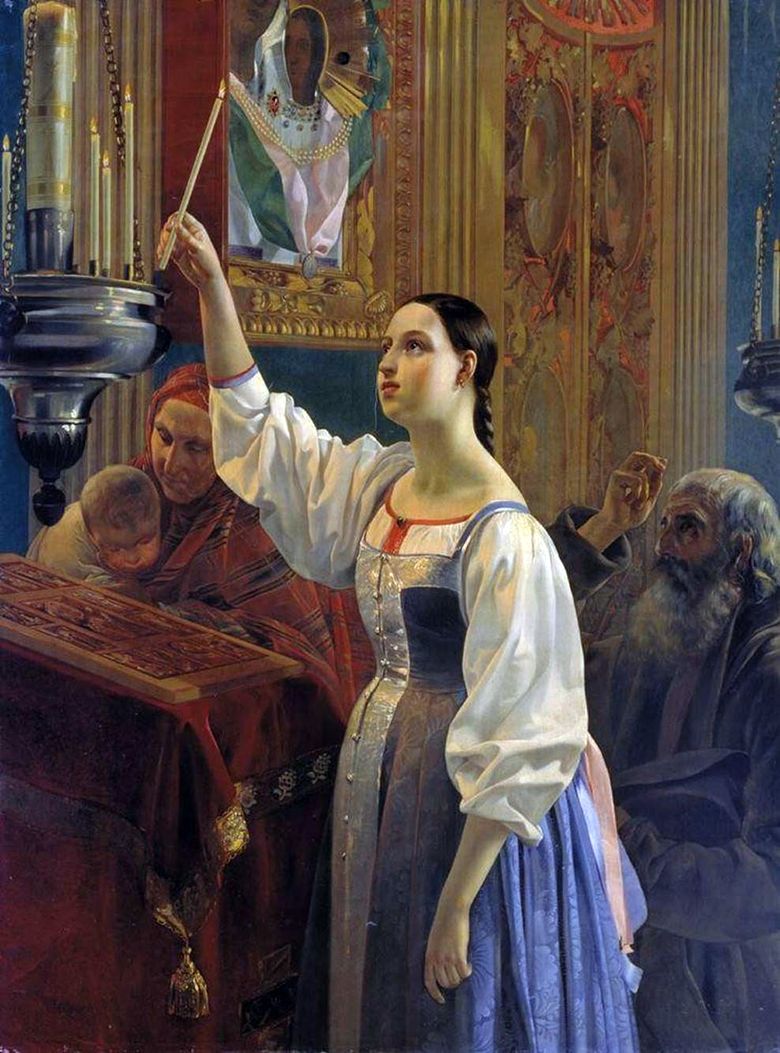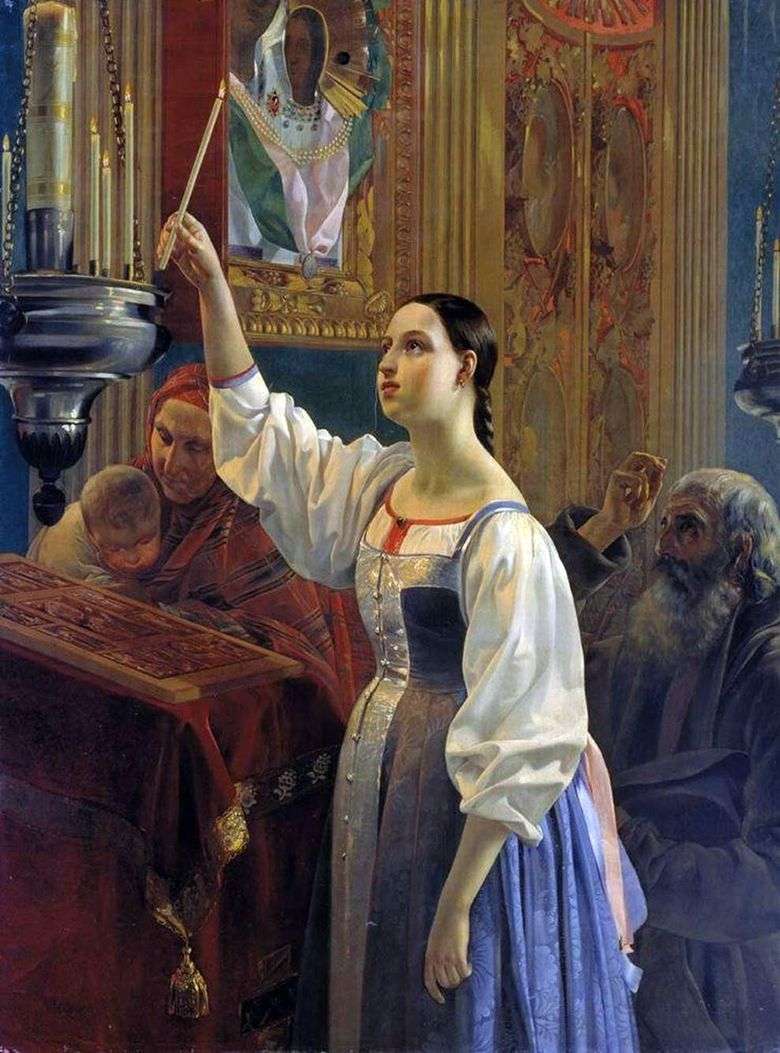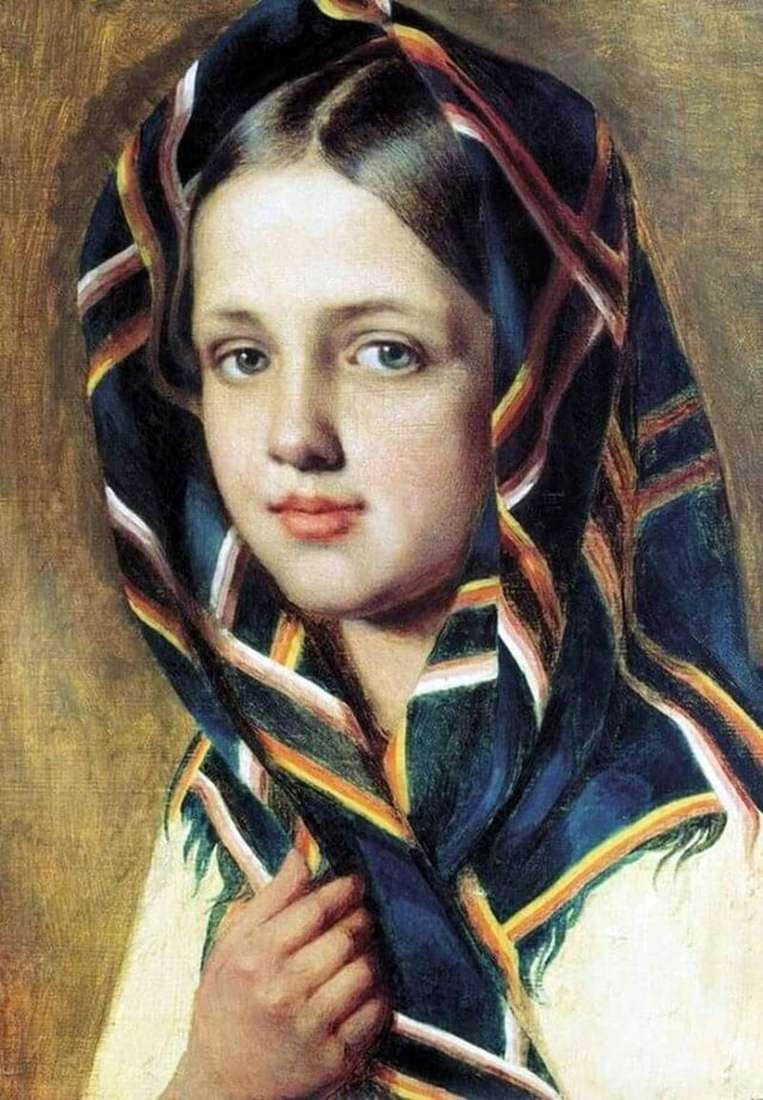
At the academic exhibition of 1842, a painting depicting a Russian beauty in a church drew the attention of the audience with a plot and elegance of performance. The absence of “inner, intimate feelings” did not prevent her from becoming the benchmark of salon painting “in the national spirit.” In the catalog of the collection of F. I. Pryanishnikov it was reported: “A Russian peasant girl, wearing a festive dress, puts a candle in the church in front of the icon… The picture is attractive both by the plot and by the performance.
Folk Russian costume and types of faces captured and transferred to the young painter is very true. The skillful combination of two lights is also wonderful here: the daylight penetrating through the temple window and the light from the candles glowing in front of the icons. “Light effects that enhance the brightness of the colors, but leveling the pictorial texture, have become one of the usual techniques of salon art, along with the idealization of the image, the academic character of the drawing while not paying attention to the internal construction of the plastic form and the smoothed, “coloring” painting.
The theme of the picture and the general decision belong to K. P. Bryullov, as evidenced by his sketch in one of the albums. In December 1860, the artist presented to the Imperial Russian Mission a picture depicting a Russian girl in the church, “to offer it to the Queen of Spain”. In a token of goodwill, diamond cufflinks were delivered to him from the queen. The picture was copied repeatedly. One of her repetitions is in the Kimry district museum of local lore. It is known that the other until 1941 was kept in the Kiev Museum of Russian Art.
 Fille mettant une bougie devant l’image – Grigory Mikhailov
Fille mettant une bougie devant l’image – Grigory Mikhailov The girl in front of the mirror by Pablo Picasso
The girl in front of the mirror by Pablo Picasso Una niña que pone una vela frente a la imagen – Grigory Mikhailov
Una niña que pone una vela frente a la imagen – Grigory Mikhailov Girl with a coin (Girl of Galicia) by Bartolome Esteban Murillo
Girl with a coin (Girl of Galicia) by Bartolome Esteban Murillo The Candle of Peace by William Holman Hunt
The Candle of Peace by William Holman Hunt Girl in a scarf by Alexey Venetsianov
Girl in a scarf by Alexey Venetsianov Letter from the front by Alexander Laktionov
Letter from the front by Alexander Laktionov Girl by Boris Kustodiev
Girl by Boris Kustodiev